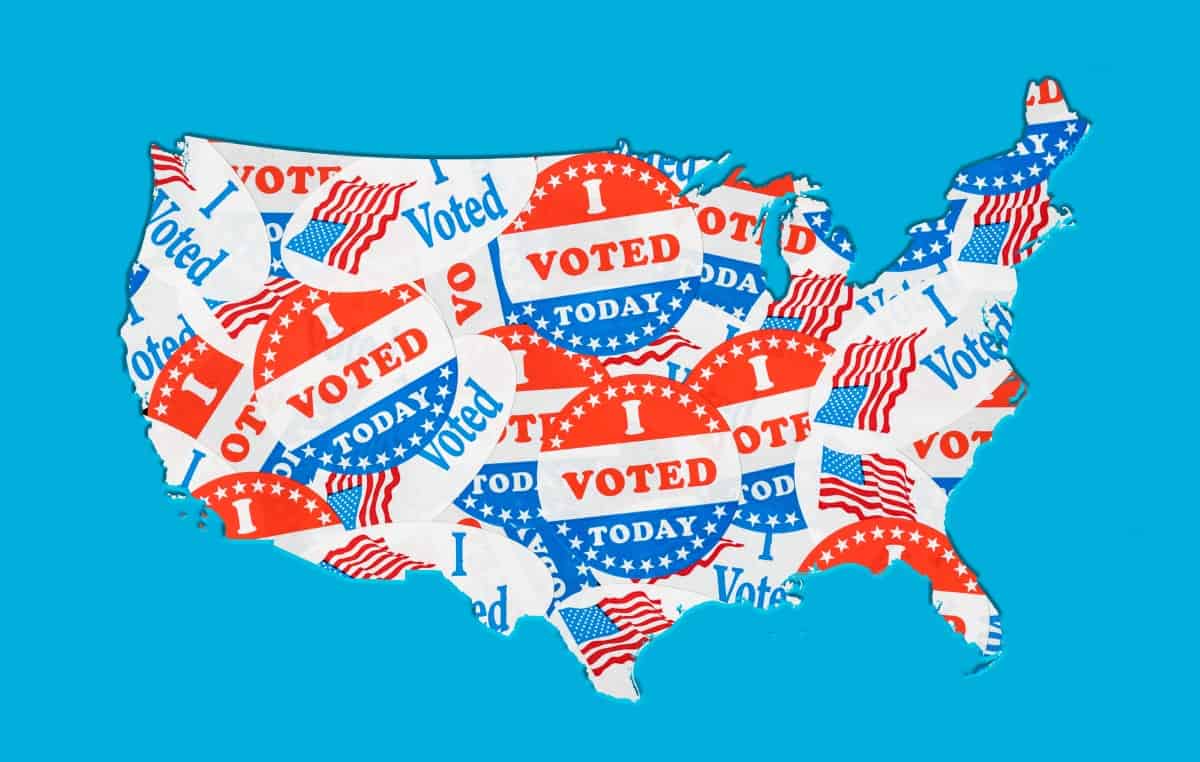Middle Class Stuck For Five Years While Rich Prospered, Census Data Shows – Financial Freedom Countdown
Americans experienced little improvement in their standard of living under President Joe Biden.
Census Bureau data released on 9th September 2025 shows median household income rose less than 3%; about $2,150, from 2021 to 2024.
After adjusting for inflation, households earned $83,730 in 2024, nearly identical to the $82,690 reported in 2023 and virtually unchanged from five years ago.
According to the Census Bureau, median household income has seen little change since 2019 once inflation is factored in, despite rising prices for daily necessities.
The Census data helps explain why so many Americans remained downbeat about the economy, with inflation and soaring prices for basics like housing, groceries, and child care leaving families stretched thin.
A Pew Research Center survey in December 2024 showed only 30% of workers were happy with their pay, and most said their wages lagged behind the rising cost of living.
Recovery Came With a Price

Biden claimed to inherit a battered economy from the shutdowns, but the subsequent recovery was undermined by the worst inflation surge in four decades.
Wages climbed as employers scrambled to hire in 2021 and 2022, yet those gains were quickly swallowed by rising prices.
As a result, households did not return to their inflation-adjusted peak until 2023, and progress stalled soon after.
Rich Households Pulled Ahead

The Census data shows a widening wealth gap. The top 10% of households saw incomes jump 4.2% in 2024, reaching $251,000.
By contrast, the bottom 10% saw virtually no change, with incomes averaging just $19,900.
Since 2009, pretax income for the top 10% of U.S. households has surged nearly 30%, rising from $193,700 to $251,000.
Over the same period, median household income climbed 20%, from $70,070 to $83,730, while the lowest earners saw only a 16% gain, from $17,060 to $19,900.
For middle-class families, frustration is mounting as they watch the wealthiest Americans continue to pull ahead despite overall economic stagnation.
Gender Wage Gap Widened Again

Men fared better than women in the Biden years.
Median earnings for full-time, year-round male workers rose 3.7% last year, while women’s earnings were flat.
That decline pushed the female-to-male earnings ratio down to 80.9%, the second consecutive annual drop after two decades of steady improvement.
Advocates warn that more women leaving the workforce; often mothers juggling family and inflexible workplaces has made the setback even worse.
Income Trends Diverged Sharply by Race and Demographic

Shifts in median income differed sharply across demographics.
Black households saw a 3.3% decline between 2023 and 2024, while Hispanic households recorded the highest gains of 5.5% followed by Asian households gaining 5%.
White households, by contrast, experienced little change.
Regional and Age Gaps Shaped Household Income Growth

Regional income shifts were uneven. Households in the West and Northeast saw gains, while those in the South and Midwest held steady.
Median incomes also rose for adults under 65, regardless of whether they owned or rented their homes.
Poverty Fell, But Millions Still Struggle

The national poverty rate edged down to 10.6% last year, from 11% in 2023.
That still left nearly 36 million Americans in poverty. Census officials define poverty for a family of four as earning less than $31,000 a year; a threshold that advocates argue remains unrealistically low given today’s cost of living.
Supplemental measures that include benefits like food aid suggest little overall progress was made.
Married Couples and High School Grads Saw Gains

Not all the news was grim. Married couples enjoyed a 5% jump in median household income, rising to $128,700.
Workers with only a high school diploma also posted income gains, bucking the wider stagnation. But these bright spots were overshadowed by an overall picture of economic flatlining for much of the middle class.
Health Coverage Stayed Stable Despite Medicaid Cuts

On health care, the uninsured rate held steady at 8%; near historic lows.
Still, Medicaid enrollment declined as states resumed removing ineligible recipients, dropping to 17.6% of the population. Job-based coverage and Affordable Care Act sign-ups filled in some of the gap.

Perhaps the most striking finding: Americans are no richer today than they were before the 2020.
Median income in 2019 was $83,260; barely different from 2024’s $83,730, a change Census statisticians say is within the margin of error.
That’s a far cry from the previous five-year stretch (2014–2019), when median income surged nearly 21%.
Inflation: The Silent Thief of Wages

Even though inflation cooled to 2.9% in 2024, down sharply from 8% in 2022, the damage had already been done.
Rising prices over Biden’s first two years erased much of the wage progress workers thought they had made.
For millions of families, the cost of housing, groceries, and energy continues to outpace income growth.
Rising Frustration Among Voters

Polls reveal widespread voter dissatisfaction with Biden’s economic performance.
A Financial Times poll found 80% of voters identified high prices as their biggest financial challenge; 58% disapproved of his economic policies, compared to just 40% approving.
More trust rested in Trump on economic issues.
The stagnation helps explain why polls consistently show Americans sour on the economy despite low unemployment.
Inflation’s erosion of purchasing power, coupled with a widening gap between rich and poor, had left many feeling stuck.
Harris Struggled to Escape the Shadow

In the 2024 election, Vice President Harris faced an uphill battle in the shadow of ongoing economic dissatisfaction with the Biden administration.
Analysts called the election environment “inherently difficult” due to inflation concerns, which harmed Democrats at the polls. Battleground states; such as Georgia, Michigan, Arizona, and Pennsylvania, were particularly hit by inflation.
Policy Changes Needed to Reverse Middle-Class Decline

As Americans confronted stagnant wages, persistent inflation, and widening inequality, the Census data underscores a sobering reality: for much of the middle class, the last five years have brought little progress.
While the wealthiest households prospered, millions of voters felt the pinch in their daily lives; shaping opinions at the ballot box and leaving political leaders under pressure to deliver tangible improvements.
Economists and advocates warn that without sustained, targeted policy changes to address cost-of-living pressures and support struggling families, these trends are unlikely to reverse anytime soon.
The Census findings may linger well beyond Biden’s presidency, shaping debates in Congress and the campaign trail alike. If middle-class families continue to feel left behind while wealth pools at the top, frustration could play an outsized role in the 2026 midterms and the battles that follow.
The official 2024 U.S. Census Bureau report can be accessed via Press Release Number: CB25- TPS.62.
Like Financial Freedom Countdown content? Be sure to follow us!

While singles may have fewer Social Security filing options than married couples, smart planning around when to claim benefits can pay off for anyone, including those flying solo.
Maximize Your Benefits: Essential Social Security Strategies for Singles

Did you find this article helpful? We’d love to hear your thoughts! Leave a comment with the box on the left-hand side of the screen and share your thoughts.
Also, do you want to stay up-to-date on our latest content?
1. Follow us by clicking the [+ Follow] button above,
2. Give the article a Thumbs Up on the top-left side of the screen.
3. And lastly, if you think this information would benefit your friends and family, don’t hesitate to share it with them!

John Dealbreuin came from a third world country to the US with only $1,000 not knowing anyone; guided by an immigrant dream. In 12 years, he achieved his retirement number.
He started Financial Freedom Countdown to help everyone think differently about their financial challenges and live their best lives. John resides in the San Francisco Bay Area enjoying nature trails and weight training.
Here are his recommended tools
Personal Capital: This is a free tool John uses to track his net worth on a regular basis and as a retirement planner. It also alerts him wrt hidden fees and has a budget tracker included.
Platforms like Yieldstreet provide investment options in art, legal, real estate, structured notes, venture capital, etc. They also have fixed-income portfolios spread across multiple asset classes with a single investment with low minimums of $10,000.